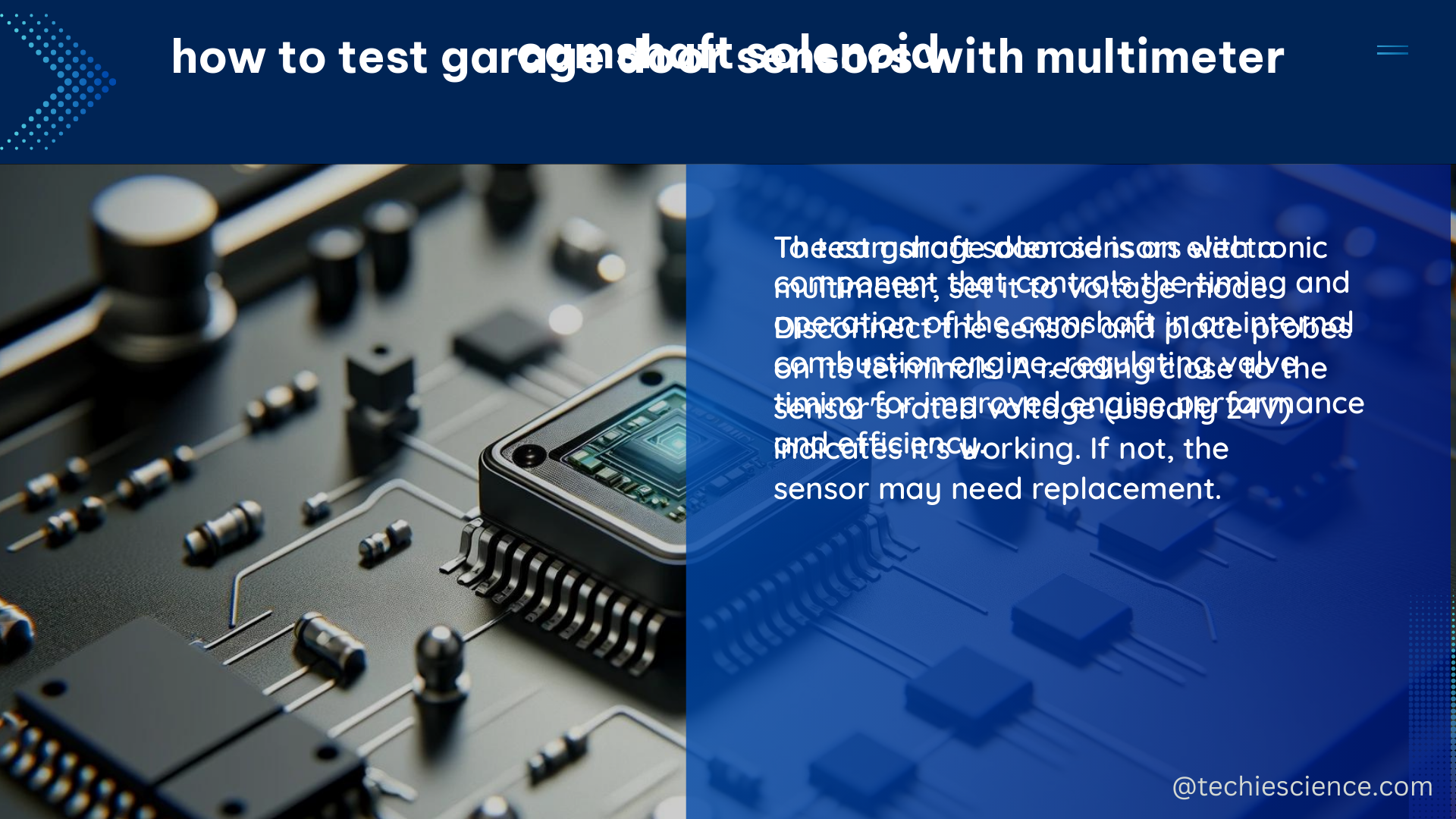The camshaft solenoid, also known as a variable valve timing (VVT) solenoid, is an essential component in modern engines that controls the amount of engine oil flow to a camshaft position actuator. This actuator can change the camshaft angle, which in turn adjusts the valve timing to optimize engine performance, fuel efficiency, and emissions.
Camshaft Solenoid Specifications
Resistance
The solenoid’s resistance is a crucial measurable and quantifiable data point. According to industry standards, a healthy camshaft solenoid should have a resistance of around 12.8 ohms, as measured across the two pins of the solenoid connector. This value can vary slightly depending on the specific make and model of the vehicle, but it should generally fall within the range of 12 to 14 ohms.
Operating Voltage
Another critical specification is the solenoid’s operating voltage, which is typically around 12 volts in most automotive applications. This voltage is necessary to activate the solenoid and allow oil to flow to the actuator. It’s important to note that the solenoid should receive a consistent 12-volt supply from the engine control unit (ECU) or the vehicle’s electrical system.
Response Time
The solenoid’s response time is also a significant factor, as it determines how quickly the solenoid can adjust the oil flow to the actuator. This value is usually measured in milliseconds and can vary depending on the specific design and application of the solenoid. A faster response time is generally desirable, as it allows the engine’s valve timing to be adjusted more precisely and responsively.
Physical Dimensions
The solenoid’s physical dimensions, such as its length, width, and height, are also important specifications to consider. These dimensions determine where the solenoid can be installed in the engine compartment and how it will fit in relation to other components. Knowing the exact dimensions of the solenoid is crucial when replacing or servicing the component.
Camshaft Solenoid Testing and Troubleshooting

Resistance and Voltage Measurement
To test the camshaft solenoid, you’ll need a multimeter capable of measuring resistance (ohms) and voltage. Start by disconnecting the solenoid’s electrical connector and measuring the resistance across the two pins. The resistance should be within the 12 to 14 ohm range, as mentioned earlier. Next, check the voltage at the solenoid’s connector while the engine is running. The voltage should be around 12 volts, indicating that the solenoid is receiving the necessary power supply.
Scan Tool Diagnostics
In addition to the multimeter tests, you can use a scan tool to monitor the solenoid’s control circuit for any faults or issues. The scan tool can provide diagnostic trouble codes (DTCs) related to the camshaft solenoid, such as P0010 (Camshaft Position Actuator Circuit Bank 1) or P0011 (Camshaft Position Timing Over-Advanced or System Performance Bank 1). These codes can help you identify the root cause of the problem and guide you towards the appropriate repair.
DIY Testing Procedure
To perform a DIY test on a camshaft solenoid, you’ll need the following tools:
– Ratchet and the appropriate socket size for the solenoid’s mounting bolt
– Multimeter capable of measuring ohms and voltage
– Scan tool
- Locate the camshaft solenoid in the engine compartment and disconnect the electrical connector.
- Use the multimeter to measure the resistance across the two pins of the solenoid connector. The resistance should be within the 12 to 14 ohm range.
- Check the voltage at the solenoid’s connector while the engine is running. The voltage should be around 12 volts.
- Connect the scan tool and check for any diagnostic trouble codes related to the camshaft solenoid.
- If the resistance or voltage readings are out of the expected range, or if there are any diagnostic trouble codes, the solenoid may need to be replaced.
Conclusion
The camshaft solenoid is a critical component in modern engines that controls the engine’s valve timing and optimizes performance, fuel efficiency, and emissions. Understanding the solenoid’s key specifications, such as resistance, operating voltage, response time, and physical dimensions, is essential for proper diagnosis and repair. By using a multimeter and scan tool, you can perform DIY testing and troubleshooting to identify and address any issues with the camshaft solenoid.
References:
– Chevy Malibu Forum – P0010 Light Still On After Camshaft Position Sensor Change
– YouTube – How to Test a Camshaft Position Sensor
– YouTube – How to Test a Camshaft Solenoid

The lambdageeks.com Core SME Team is a group of experienced subject matter experts from diverse scientific and technical fields including Physics, Chemistry, Technology,Electronics & Electrical Engineering, Automotive, Mechanical Engineering. Our team collaborates to create high-quality, well-researched articles on a wide range of science and technology topics for the lambdageeks.com website.
All Our Senior SME are having more than 7 Years of experience in the respective fields . They are either Working Industry Professionals or assocaited With different Universities. Refer Our Authors Page to get to know About our Core SMEs.